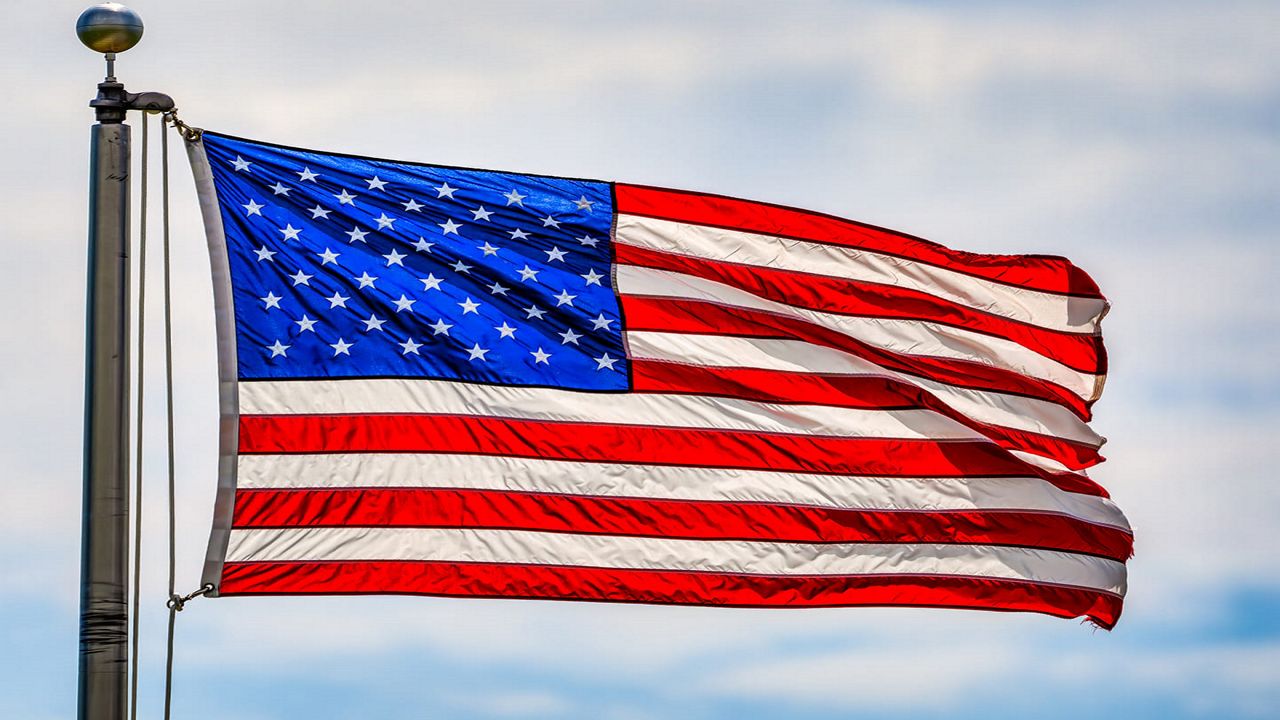As American holidays go, Flag Day is perhaps not as well-known or recognized as others. It is not an official federal holiday, so most federal offices remain open, and businesses usually remain open as well.
However, the holiday, which occurs on June 14, does prompt reflection on the Stars and Stripes, and a historic first use of it that has a connection to Maine.
The first official salute to the flag by a foreign power, on Feb. 14, 1778, involved an American warship, the USS Ranger. The vessel was visiting Quiberon Bay, a body of water off the south coast of France’s Brittany region when the French navy fired its guns in recognition. The Ranger was flying the original American flag, similar to today’s flag except there were only 13 stars in a ring on the blue field.
Volume 11 of the U.S. Navy Historical Center’s “Naval Documents of the American Revolution” has a brief account noting the event from the diary of Dr. Ezra Green, who was on board. He wrote:
“Saturday, 14th Feby.-Very Squaly weather, came to Sail at 4 o'clock P.M. saluted the french Admiral & rec'd nine guns in return this is the first salute ever pay'd the American flagg[sic].”
The Ranger was a three-masted sloop-of-war, built at a shipyard in the middle of the Piscataqua River between Kittery and Portsmouth, N.H. Today, most people think of the Portsmouth Naval Shipyard as the principal local producer and maintainer of naval vessels, but the shipyard’s history only dates back to its construction in 1800.
Prior to that, the principal local military shipyard was located on Badger’s Island, just west of Seavey Island, where Portsmouth Naval Shipyard is today. While situated in the middle of the Piscataqua River Badger’s Island is, according to Robin Silva, a librarian at the Portsmouth Athenaeum, considered part of Kittery.
Shipwright James Hackett supervised the design and construction of the Ranger in 1777. Hackett himself had a colorful history, having already served in combat during the French and Indian War as part of a unit called “Rogers’ Rangers.”
Thomas F. Kehr, in an article on Hackett in the December 2011 issue of the U.S. Naval Institute’s magazine Naval History, described the fighting unit as “the spiritual forebears of today’s US special-operations forces.”
The Ranger, initially launched as the Hampshire, was renamed presumably after Hackett’s old fighting unit, Kehr wrote. It was placed under the command of John Paul Jones, a man who would go on to distinguish himself as an American naval commander against the British.
“Jones did the (Ranger) name honor, applying at sea the type of guerrilla tactics that had made Hackett’s old outfit famous,” Kehr wrote. “The Ranger’s attacks on the British home islands became the stuff of legend.”
It was during this legendary command by Jones that the Ranger received the salute by the French.
Sadly, the remainder of the Ranger’s history is less remarkable. Multiple accounts hold that after Jones was reassigned to another command, the vessel went on to be captured by the British in 1780 during a battle in Charleston, S.C., renamed the Halifax, pressed into service in the British Navy, and later decommissioned.
As for Hackett, he went on to build several more warships for the Continental Navy, but after Portsmouth Naval Shipyard was constructed, Hackett got a letter in 1801 informing him he was no longer needed. Kehr blames a ramping down of military spending, noting the shipyard wouldn’t launch another vessel for nearly 15 years, but hints that politics may have played a role as well.




